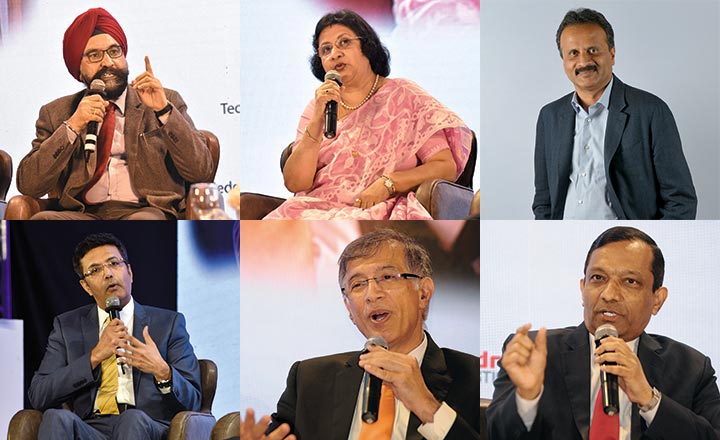Editor, N Mahalakshmi: Thank you panellists for joining me here today. We chose this topic ‘Creating Indian Icons’ because India is at a stage where consumer aspirations are rising and there are a whole bunch of global companies right from Jockey to Apple, which are tapping into the potential of India. Usually, iconic companies are built on a singular theme, for example, Coke around happiness, Apple around simplicity, Ferrari around racing and passion. Each one of you represents companies that are iconic in the Indian context. Mr Hiranandani is creating communities, SBI stands for trust and reach, Mahindra stands for being tough and rugged, Amul stands for the Taste of India and Cafe Coffee Day for affordable 3rd place. We will start with Mahindra vehicles. Mr Goenka, can you give us some insights on what has gone into building an iconic brand like yours?
Pawan Goenka: One cannot set out to create an iconic brand. It happens because of the result of many actions over the years. Even if you are among the top 20 brands, it is not necessary that you are an iconic brand. So, there is a difference between a big brand versus an iconic brand and for that iconic brand I do believe there is a fulcrum that is required; what does the brand stand on? What is the primary deliverable of the brand? Now, if you talk about the Mahindra group, I think the group’s fulcrum perhaps, at that time, was trust. Customers knew that even if the product didn’t perform, the company will stand behind it and will not leave the customer high and dry.
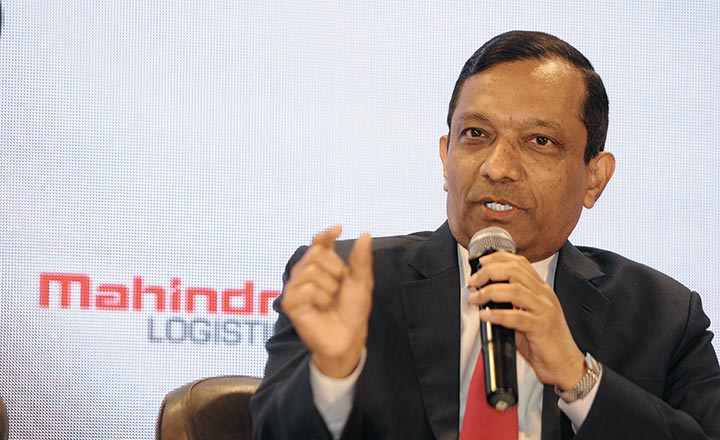
But as we moved forward and introspected to see what is it that the modern customer was looking for, especially, millennials, we found that we need to have a different connect with them, than perhaps what we had with the previous generation. After a lot of research, which we got done by an agency in New York, we realised that we had something in Mahindra that we had not tapped. And that was the whole philosophy of ‘Rise’ which we then attached to our name.
Mahindra Rise is all about saying that whatever we do, whichever business we are in, whoever we interact with... employees, customers, communities around us, dealers, suppliers, etc, we will help everybody rise. Rise in terms of income levels, rise in terms of quality of life. So, we have been for the last five years proving to ourselves, internally and to the world, that Mahindra is all about making communities rise and it’s working quite well for us. Mahindra is a very diverse business group and, in some sense, ‘Rise’ is the only word that’s connecting all our businesses, be it real estate, automotive, or IT infrastructure.
Arundhati Bhattacharya: I have been lucky in a way that I inherited an iconic institution, so I did not have to go about creating an icon. As you know, the bank has been around for 211 years. It is a bank that has not only created and participated but has been around throughout the entire evolution of banking in the country. You’d be surprised to know that today our market share is more than what it was a decade ago. So what exactly is it that we are doing in order to ensure that this organisation remains an iconic one?
What we are actually trying to do, as was just said by Mr Goenka, is to see what is in it for the customer, so whatever you do the customer needs to be at the centre of it. One thing that has to be understood is that when you are dealing with money, you should be able to make people trust you. The trust again will come only when they realise that their interest is at heart. If their interest is not what we are looking after, there is no way we can create and retain an iconic institution.
Mr Hiranandani, your tagline is ‘creating better communities’. Is that how you started or envisaged it or did you just see it as a business opportunity and build on it?
Niranjan Hiranandani: I am going to borrow some of my points from the preceding speakers Mr Goenka and Ms Bhattacharya. The first and foremost thing that we did was to win the trust of consumers and if we hadn’t had this trust for the last 30 years on a project-to-project basis, we could not have been in the position that we are today. The second part of it was the fact that we did what we were expected to do, but unfortunately, the other people in the industry did not do. So, we stabilised the quality of a project at a time, when it was reputed for builders not to stabilise quality, we tried to keep up our commitment of delivery when other people would not do that.
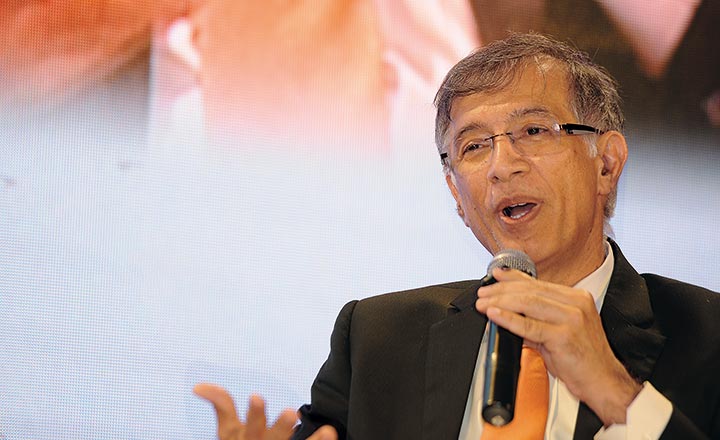
And of course, the value creation that we did was probably second to none compared to anyone in the industry. For example, somebody who bought a flat in a building called Lake Castle in 1991 from us at Rs.1,000 per sq ft can now sell that for Rs.33,000 per sq ft. That’s the value creation we have been able to do because even after 20 years the value of the product you have created is durable. I think we became iconic by default because the others just didn’t do what was needed to be done, so it became easy for us to become a leader in the real estate business through commitment.
Mr Sodhi, you are in a hyper-competitive industry and you are a cooperative. So how do you maintain Amul as an iconic brand?
RS Sodhi: If I have to describe it in one word, it is consistency; consistency in values, in business objectives and products, in communication and HR policies. Whatever value systems the founders imbibed in us, we ensure that we not only show them in our presentation but also in action. When Amul was founded, its business philosophy was value for many and value for money. Value for 3.6 million farmers so that they get a stable price for their produce; value for millions of consumers so that they get the best product at a reasonable price.
The other thing is you do not work to win the loyalty of the consumer. Loyalty can change. Today I may travel by a particular airline, tomorrow if somebody gives me a cheaper fare I may switch. We are not working for loyalty but to win blind faith. Once you develop blind faith, the consumer will not look right or left, he will go and pick your brand. Blind faith does not come overnight by spending millions on advertising; blind faith comes over a period of time. You cannot create an iconic brand with deep pockets, it happens only when all the stakeholders are happy.
Mr Siddhartha, what is the fulcrum around which you have built Cafe Coffee Day
VG Siddhartha: First of all, I don’t think we are iconic yet. I have great respect for Amul and Dr Kurien and I know how Britannia and State Bank were built. We sell around 180 million cups of coffee every year. So I tell my team that we sell only a cup of coffee every year to an Indian, which means 364 days we don’t work. So I think we have just begun. But 10-15 years from now I am sure we will build a coffee brand that every Indian will aspire for and be proud of.
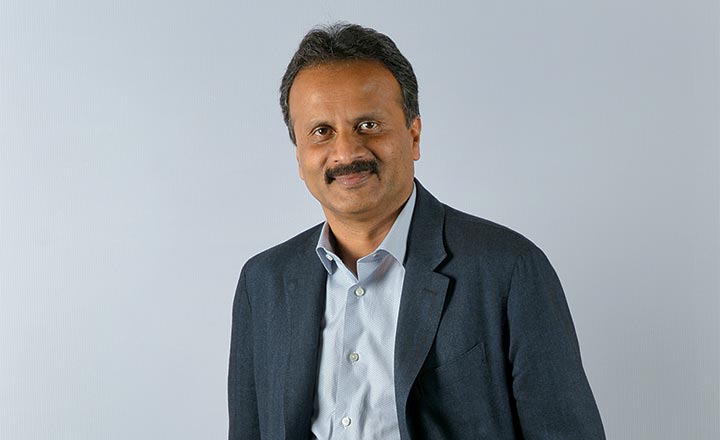
For us, it is all about customer satisfaction. We can have big dreams and aspirations but if a customer is not satisfied we cannot build a great brand. If you ask me how good we are, we are only 65% perfect and can improve another 35%. In 1992, my international competitor Starbucks had revenue of $60 million and market cap of $200 million. Today, their revenue is $21 billion and market cap is $85 billion. My aspiration is to build a great brand from India and my team and I are committed to building that kind of a brand in the span of next 10 years.
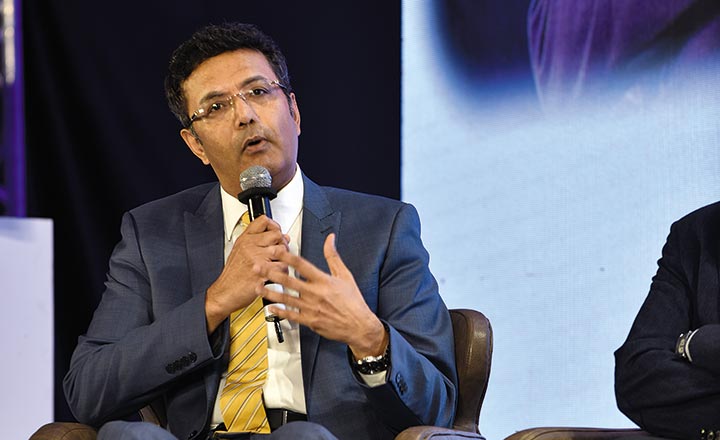
Varun Berry: The basic difference between this side and that side of the panel is that we are in the food business where we have millions of interactions with consumers every day. So it is easier for us to build brands than the real estate or maybe automobile industry because a brand is a deep relationship that you have with your consumer, and that’s built with multiple and sustained interaction over a period of time.
The two factors that really help you build a brand over a period of time is that you have to be authentic and honest, because if you are not then the relationship breaks. It’s like any other relationship that you have with your friend, your wife and your children. If you’re not authentic, if you’re not honest, it’s not going to go forward. The other thing is that food is all about the senses. So the moment you see the product, the body should feel good about what you are consuming.
Also, when you have many interactions the number of occasions that the consumer gets to reject you is very high. So from that standpoint, I think it’s very important to think about all those things as you move forward as it is all about the relationship with your consumer. There are many international companies which have been in India for a very long time and have developed this relationship but versus a new company coming from outside, I think Indian companies will always have a better chance of success. Then why is it that we see a lot more international iconic brands than Indian brands?
The reason really is that as Indian companies we do not go all the way. Sometimes we do not invest in state of the art R&D or we are not steadfast on quality. So, I would urge all Indian companies to make sure that you are authentic and honest. We don’t need deep pockets, it just needs understanding of the consumer, but they must spend behind the brand and technology to deliver the best quality possible for every pack that you sell.
Is that really possible Mr Goenka? Because even if you have the resources, it is not easy to make an impeccable car. And if you don’t invest, can you really become as good as some of the international brands?
Pawan Goenka: I think it’s a very insightful question and generally there is a perception that Indian companies are not doing enough research & development. That perception is not totally unfounded, but if you were to look back, say some 20 years ago and if you look at the companies today, the auto companies that are still surviving and doing well are the companies that invested in technology.
There is no way in the automotive industry that you can remain competitive by doing nothing. If you look at Mahindra, our total expenditure on research and development is 4% of total revenue, which is the same as Toyota. We may not have the same scale as Toyota but more than money the big problem for Indian OEMs is that most of the research work is based on talent and that is the reason many companies are going overseas.
Mahindra has acquired a Korean company; Tata has acquired a well-known company in the UK. Other companies are also acquiring technology as it’s very clear that if you don’t match your peers in terms of technology and quality, in terms of delivery and performance, you cannot survive. No consumer is going to buy a product because you are an Indian company, that cannot be the sole reason for buying the product, it has to be a value which is equal to or maybe even better than the value coming from MNCs.
Mr Hiranandani, you price 30 to 40% higher than the rest of the neighbourhood. Have you ever felt that sticking to this positioning limits your growth opportunity?
Niranjan Hiranandani: No, I don’t think that really is the case. I grew up in Malabar Hill, so for me the benchmark at the beginning was that the quality of life that I had in Malabar Hill, should be in Powai also. So if it was the Hanging Garden I should build a Hanging Garden of Powai much better, I should build a school which is better than Campion, the school that I attended, and so on and so forth.
So the benchmark you set for yourself is really the criteria. Whether you pick up technology from India, within your own company, externally, or the materials which are available worldwide is not the real issue. The issue is people don’t want to commit themselves to do something which is better. If today you ask me who is the competition to Hiranandani? It’s not Toyota but Hiranandani himself because you really want to better yourself in your next project.
You are blessed that you have only yourself as your competitor...
Niranjan Hiranandani: Yes, blessed in the sense that we do not find any single company in our country which is better than ours in the total range of activity that we have. So what we try to do is, we will copy Mr Raheja in a particular activity, we will copy Mr Lodha in something else and we would pick up technology from Singapore or Japan, or some other company in the world, and do all of it.
For instance townships, we did not have examples of good townships in India some 15 years or so when we started. I wish I had somebody readymade I could copy and say I want to take technology from a company in America or from Japan or Hong Kong or Singapore; I think that would be the easiest thing for me to do. I would love to do it, unfortunately, nothing like that is available, so we’re stuck with learning ourselves and keep on improving on whatever we can for the development of our next project.
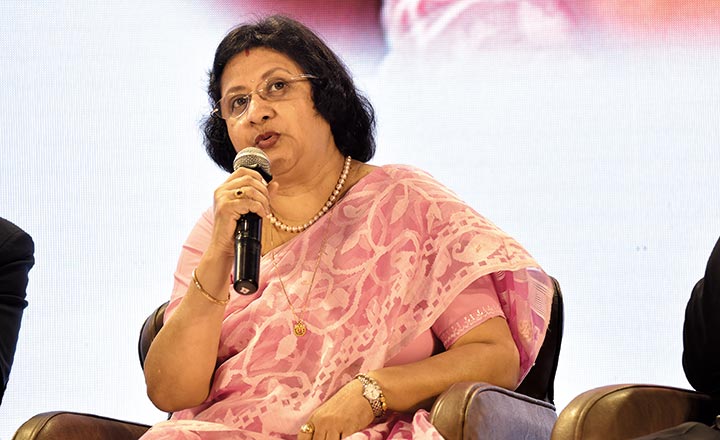
Ms Bhattacharya, tell us two things that you have initiated which builds SBI and two suggestions that you would like to make to the government to ensure that SBI as an institution really thrives
Arundhati Bhattacharya: Two things that we have really done differently are going digital and managing risk. We have really and truly brought in a lot of changes by going digital, than what we had 10 years ago in computerisation, where it was taking the manual way of doing things and then ensuring that the system does the same. Today when you are going digital you start from the customer and you do what I call the customer journey. So you take the various things that a customer needs to do and then you find out digital solutions for it. We have been working quite consistently there for the past three years.
The other thing that we have done is in the area of risk. Compared to looking at risk as a static kind of a thing, risk is now considered much more dynamic, where everybody not just the risk managers are involved. So if I have a person opening an account, he should know that if he goes wrong that account could be used to defraud the bank in a very big way. So risk has to be understood right from the front line to the senior levels, that is again something that we really have incorporated.
And thinking about what I were to tell the government, I was joking with Mr Vaidyanathan that the government holding coming down to 49% would take care of a lot of things, On a more serious note, the two things that the government really needs to do is address cyber security and skill development.
We are today in an interconnected world and therefore even if there is one piece that is not secure then the whole system can get compromised. The other thing would be human resources. Today, skill levels are very important because the world is changing rapidly, so it’s important to ensure that we build the right skills in the company.
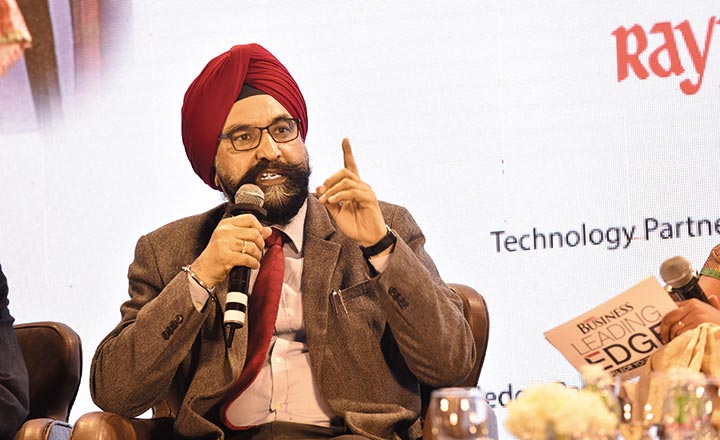
One concluding thought, your one line mantra for building an iconic company
RS Sodhi: If you want to build brands, don’t look at quarterly figures.
VG Siddhartha: I completely agree with Mr Sodhi, if you want to build a brand you have to be in the game and play for 10 to 15 years.
Varun Berry: I would go back to what I said earlier. It is all about authenticity and honesty. If you are absolutely authentic and honest about what you are doing, you will be able to build an iconic brand.
Pawan Goenka: I would agree with authenticity and honesty because the consumer today is not fooled by a product or brand for too long and if you are not authentic about what your value proposition is, then the brand can never become iconic.
Arundhati Bhattacharya: I would say that you will have to give attention to the entire product. So even if a product is great and packaging is not good, it won’t work. So it has to be from micro to macro, all of that needs attention.
Niranjan Hiranandani: I would have copied most of you but then just to add another point, and that is change management. We had Brexit and Trump and then demonetisation in one year. I think if you are going to get shocks like this, you really need to be good at change management to be able to handle volatile situations.




